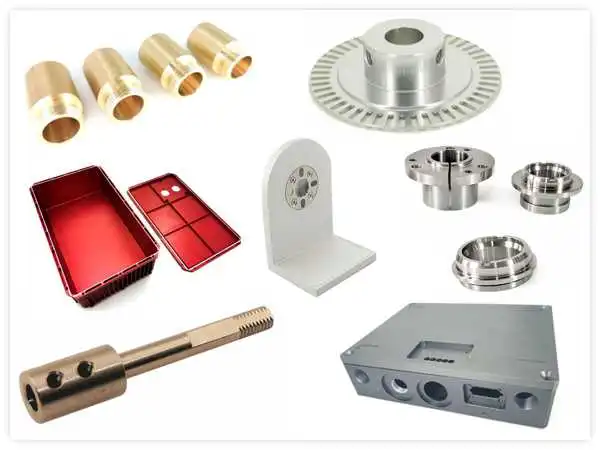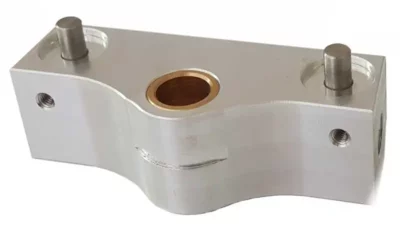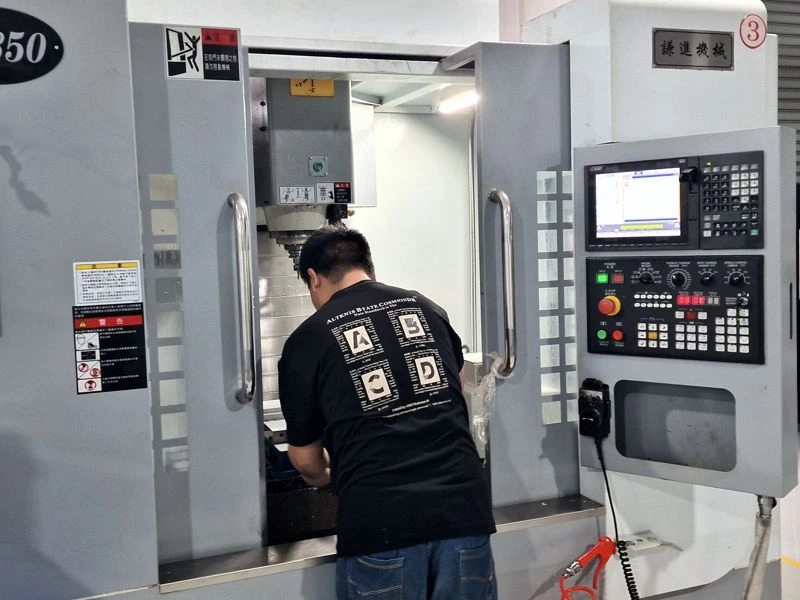For those clients seeking to delegate the fabrication of their aluminum machined parts to a reliable machining facility, Davantech is the ideal solution. Our primary strength lies in delivering swift and precise aluminum CNC machining services with exceptional efficiency. Moreover, our expansive CNC milling and turning facility spans over 2000 square meters, equipped with state-of-the-art CNC machinery.
Our expertise in product design and manufacturing ensures the provision of top-tier OEM aluminum CNC machined parts to clientele worldwide. These offerings encompass both aluminum milling and turning components. Furthermore, Davantech proudly holds ISO9001:2015 certification, underscoring our commitment to quality assurance.

Machined aluminum parts.
Aluminum stands as a perfect choice for industrial components and construction materials. Consequently, CNC machining emerges as a prevalent method for fabricating aluminum parts. Specifically, its commendable thermal conductivity renders it ideal for crafting heatsinks and cooling elements. Moreover, aluminum milling parts exhibit remarkable strength-to-weight ratios, while the metal’s exceptional machinability ensures efficient fabrication processes. The propensity of cutting tools to effortlessly remove chips further enhances aluminum’s appeal, establishing it as the preferred material for a diverse array of milling and turning applications.
To elucidate, CNC-machined aluminum parts encompass electronic enclosures, frame extrusions, LED lighting components, mounting brackets, machinery elements, aircraft components, and a broad range of industrial parts.
Advantages of aluminum for machined parts.
- Aluminum has a good strength to weight ratio.
- It can be casted, extruded and forged.
- Durable material and comes in many grades.
- Good thermal conductivity.
- Non-magnetic, non-flammable.
- Small to large size depending on the fabrication process.
- Precision milling and turning possible with narrow tolerances.
- Different surface treatments such as anodizing.
- Resistant low temperature.
- Electrical conductivity.
- Aluminum is recyclable.
- Component fabrication is relatively fast and low cost.

A Guide to Aluminum Machined Parts
Machining aluminum parts requires careful consideration of several factors to achieve accurate and high-quality results. Here are the general steps involved in machining aluminum parts from design till delivery:
-
Design and Planning:
- Begin by creating or obtaining a detailed design or CAD model of the aluminum part.
- Determine the dimensions, tolerances, and required surface finishes.
- Consider the machining process and select appropriate cutting tools and machining techniques.
-
Material Selection:
- Choose the right aluminum alloy based on the specific requirements of the part, such as strength, corrosion resistance, or heat conductivity.
- Popular aluminum alloys for machining include 6061, 7075, and 2024.
-
Setup the Machining Equipment:
- Ensure the machine tools, such as lathes, mills, or CNC machines, are properly set up and calibrated.
- Mount the aluminum workpiece securely on the machine’s workholding device, such as a vise or fixture.
-
Tool Selection:
- Select the appropriate cutting tools for aluminum machining. Carbide or high-speed steel (HSS) tools are commonly used.
- Consider using sharp tools with high helix angles to efficiently evacuate chips and reduce heat buildup.
-
Cutting Parameters:
- Determine the cutting speed, feed rate, and depth of cut based on the specific aluminum alloy, tooling, and machine capabilities.
- Consult cutting speed charts or machining databases for recommended parameters, or conduct tests to optimize settings.
-
Coolant and Lubrication:
- Use coolant or lubricants during the machining process to dissipate heat, prolong tool life, and improve surface finish.
- Consider using water-soluble coolants or cutting fluids specifically formulated for aluminum.
-
Machining Operations:
- Begin with roughing operations to remove excess material efficiently. This can involve facing, turning, or milling operations.
- Follow up with finishing operations to achieve the desired dimensions and surface finish. These can include profiling, drilling, or threading.
-
Chip Control:
- Pay attention to chip evacuation to prevent chip buildup and potential tool damage. Use proper chip-breaking techniques and ensure adequate chip clearance.
-
Quality Control:
- Regularly measure and inspect the machined parts using precision measurement tools, such as calipers, micrometers, or CMMs.
- Verify dimensions, tolerances, and surface finish to ensure compliance with design specifications.
-
Surface Finishing (Optional):
- Consider post-machining surface finishing processes such as deburring, polishing, anodizing, or painting to improve aesthetics and functionality.
-
Cleaning and Packaging:
- Thoroughly clean the machined parts to remove any cutting fluid, chips, or contaminants.
- Properly package the finished aluminum parts to protect them during transportation or storage.
Remember, the specific machining process may vary depending on the complexity of the part, the chosen machining technique (CNC or manual), and the available equipment. It’s important to refer to the manufacturer’s guidelines, tooling recommendations, and best practices for machining aluminum.
Aluminum machining by Davantech.
As a professional CNC machining manufacturer based in China, Davantech offers CNC machining and aluminum components manufacturing. Nevertheless, only skilled and experienced staff operate the machinery. In addition, the factory is managed well by a Dutch and Chinese team. And also, thanks to our additional product design and tooling design engineers, we understand the entire process from idea till manufacturing. Even more, we know the characteristics of aluminum and how to process it in different ways. In this way, you will benefit from our experience of how to make aluminum machined parts in the most economical way. As a result, we always offer the best solutions for your product requirements.

Range of aluminum materials:
Aluminum 6061, Aluminum 2024, Aluminum 5052, Aluminum 6063, Aluminum 7050,Aluminum 7075, and more. We source any requested aluminum alloy.
Custom surface treatments:
Anodizing, powder coated and wet painted surfaces are the standard surface treatments. For example, colors applied are Black, Natural, Blue, Green and different colors as your requirements
Surface finishing:
Sand blasting, polishing, shaking, anodizing, oxidation, electrophoresis, powder coating and wet painting
Various aluminum processing:
Aluminum extrusion, aluminum forging, CNC aluminum milling, CNC aluminum turning, CNC aluminum drilling, reaming and tapping.